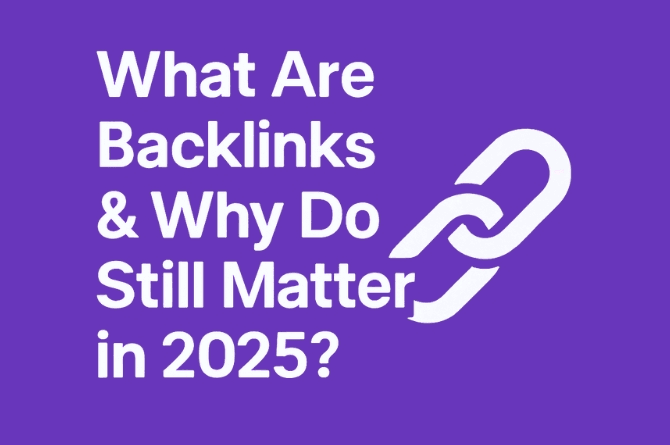If you’ve ever wondered why some websites dominate Google while others struggle to rank—despite having great content—the answer often lies in backlinks.
But what exactly are backlinks? Why do they still matter in 2025, even as search engines evolve? And how can you build them effectively without falling into outdated tactics?
This guide isn’t just another surface-level article. We’re diving deep—covering history, psychology, algorithm shifts, future trends, and advanced strategies that most SEO guides ignore.
By the end, you’ll understand:
- The true role of backlinks in 2025 (spoiler: they’re not just for “SEO juice”)
- How Google’s AI-powered algorithms (like Gemini) evaluate links today
- The biggest myths about backlinks that could be hurting your rankings
- Underrated backlink sources 99% of marketers ignore
- How to build links without begging for guest posts or directories
- The dark side of backlinks (yes, bad links can still tank your site)
Let’s begin.
Chapter 1: What Are Backlinks? (Beyond the Basic Definition)
The Textbook Definition
A backlink (or “inbound link”) is when another website links to yours.
But that’s like saying “a car is a vehicle with wheels.” Technically true, but it misses the depth.
How Search Engines See Backlinks
Google’s original algorithm (PageRank, 1998) treated backlinks as votes of confidence. More links = more authority.
But in 2025, backlinks are multidimensional signals:
- Trust Flow: Does the linking site have credibility? (E.g., .edu or .gov links vs. spammy forums)
- Relevance: A link from a finance blog means more to a banking site than a link from a pet store.
- Anchor Text: The clickable text in a link (e.g., “best running shoes” vs. “click here”) still influences rankings—but in smarter ways.
- Context: Is the link surrounded by quality content, or stuffed in a footer with 50 other links?
- Traffic & Engagement: Does the link actually drive clicks? Google tracks user behavior more than ever.
The Psychology Behind Backlinks
Why do people link to websites? Understanding this is key to earning links naturally:
- Resource Recognition: “This guide is so good, I’ll reference it.”
- Expert Validation: “This study proves my point—I’ll cite it.”
- Partnerships: “We collaborate with this brand—here’s their site.”
- Ego Bait: “They mentioned me—I’ll link back!”
If your content doesn’t trigger one of these emotions, getting backlinks will be an uphill battle.
Chapter 2: Why Backlinks STILL Matter in 2025 (Despite AI & Algorithm Changes)
Myth: “Backlinks Are Dead”
Some argue that with AI-driven search (Gemini, SGE), backlinks matter less.
Reality: They’ve evolved, not died.
Here’s why:
1. Google Still Relies on Links for Discovery
- AI may generate answers, but Google still needs trusted sources to pull data from.
- Links help Google find and validate new content.
2. Links = Trust (E-E-A-T Update)
Google’s E-E-A-T (Experience, Expertise, Authoritativeness, Trustworthiness) framework heavily weighs:
- Who links to you? (Medical sites need .edu/.gov links)
- How natural are the links? (Forced links get filtered out)
3. Links Drive Direct Traffic
- A link from Reddit, Forbes, or a niche forum sends real visitors—not just “SEO value.”
- Google tracks click-through rates (CTR) from referrals.
4. Competitors Are Still Using Them
If your rivals have strong backlinks and you don’t, you’re already behind.
Chapter 3: The 2025 Backlink Landscape (What’s Changed?)
1. AI-Generated Content & Link Value
- Low-quality AI spam sites are flooding the web. Links from them? Worthless.
- Solution: Focus on links from human-curated, authoritative sites.
2. Google’s “Link Spam” Updates
- Google now devalues manipulative links (e.g., paid link schemes, PBNs).
- What works: Natural editorial links (e.g., earned media, PR mentions).
3. The Rise of “Brand Signals” Over Raw Links
- Mentions without links (e.g., “Check out [Brand] on Twitter”) now help.
- But links still anchor these mentions for rankings.
4. Video & Social Links Matter More
- YouTube descriptions, TikTok bios, and podcast show notes pass equity.
- Google indexes social links faster than ever.
Chapter 4: How to Build High-Quality Backlinks in 2025 (Advanced Tactics)
Tactic 1: The “Unlinked Mention” Hack
- Use Google Alerts or tools like Ahrefs to find brands mentioning you without a link.
- Politely email: “Thanks for the shoutout! Would you mind adding a link so readers can find us?”
Tactic 2: The “Skyscraper 2.0” Method
- Find top-ranking content in your niche.
- Make something 10x better (deeper research, interactive tools, video breakdowns).
- Pitch it to sites that linked to the weaker version.
Tactic 3: HARO (Help a Reporter Out)
- Journalists constantly need expert quotes.
- Sign up for HARO, respond fast, and get links from Forbes, CNN, etc.
Tactic 4: Broken Link Building
- Find dead links on high-authority sites.
- Suggest your working resource as a replacement.
Tactic 5: Reverse Guest Blogging
- Instead of begging for guest posts, invite influencers to write for YOUR blog.
- They’ll share it and link back.
Tactic 6: Niche Edits (The Secret Weapon)
- Find existing posts on high-DA sites.
- Offer to update their content in exchange for adding your link.
Chapter 5: The Dark Side of Backlinks (What to Avoid)
1. Toxic Links
- Spammy directories, PBNs, and irrelevant links can penalize your site.
- Fix it: Disavow bad links using Google Search Console.
2. Over-Optimized Anchor Text
- Stuffing “best VPN 2025” in every link looks manipulative.
- Natural ratio: 60% branded, 30% generic, 10% exact-match.
3. Ignoring Link Velocity
- Getting 1,000 links overnight? Red flag.
- Grow organically to avoid penalties.
Final Thoughts: The Future of Backlinks
In 2025, backlinks aren’t just about rankings—they’re about:
- Trust signals for AI-driven search.
- Referral traffic from real audiences.
- Brand authority in your niche.
The game has changed, but the fundamentals remain: Build relationships, create undeniable value, and earn links—don’t chase them.
Now, go out there and build a backlink profile that crushes your competition.

